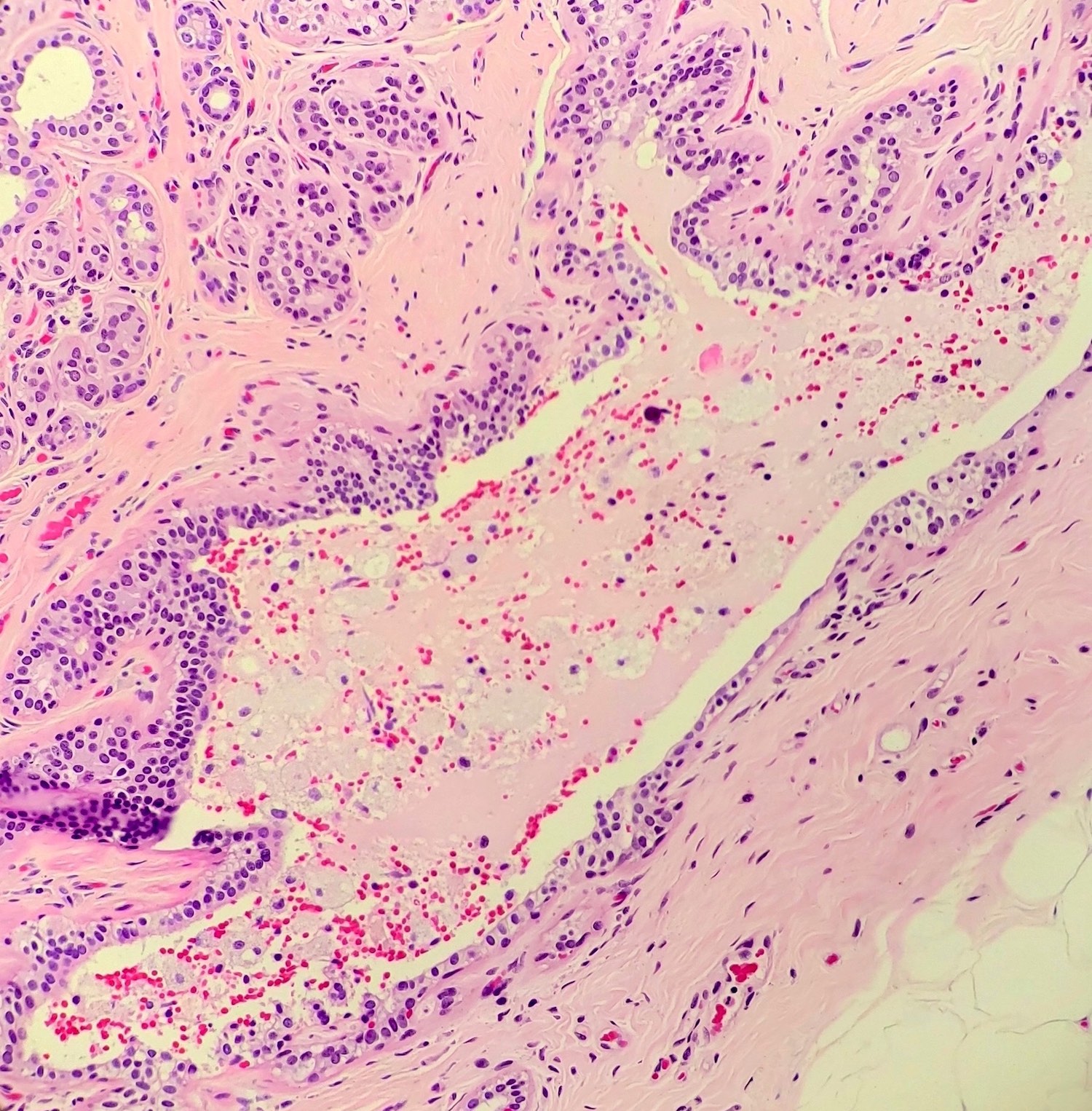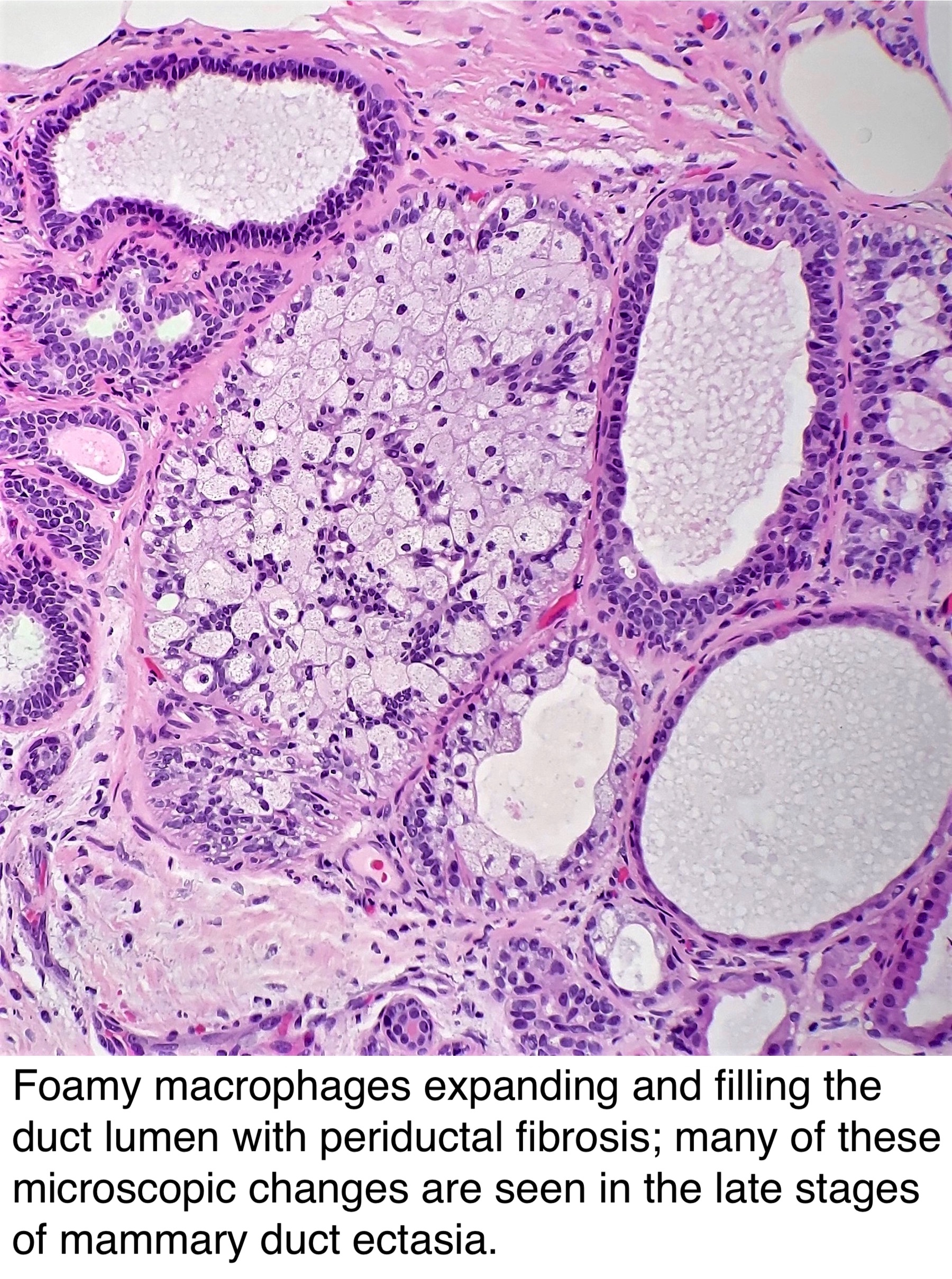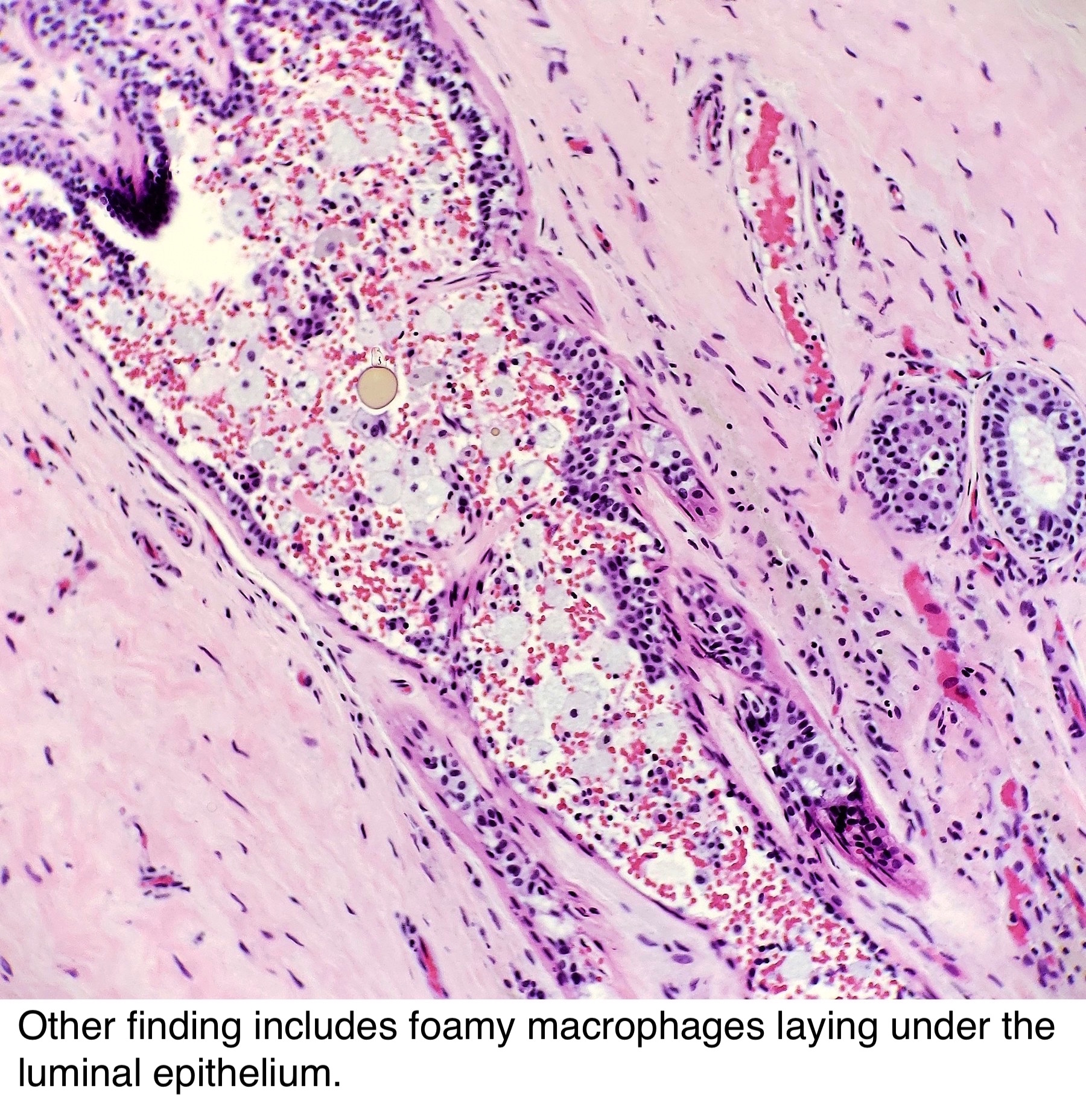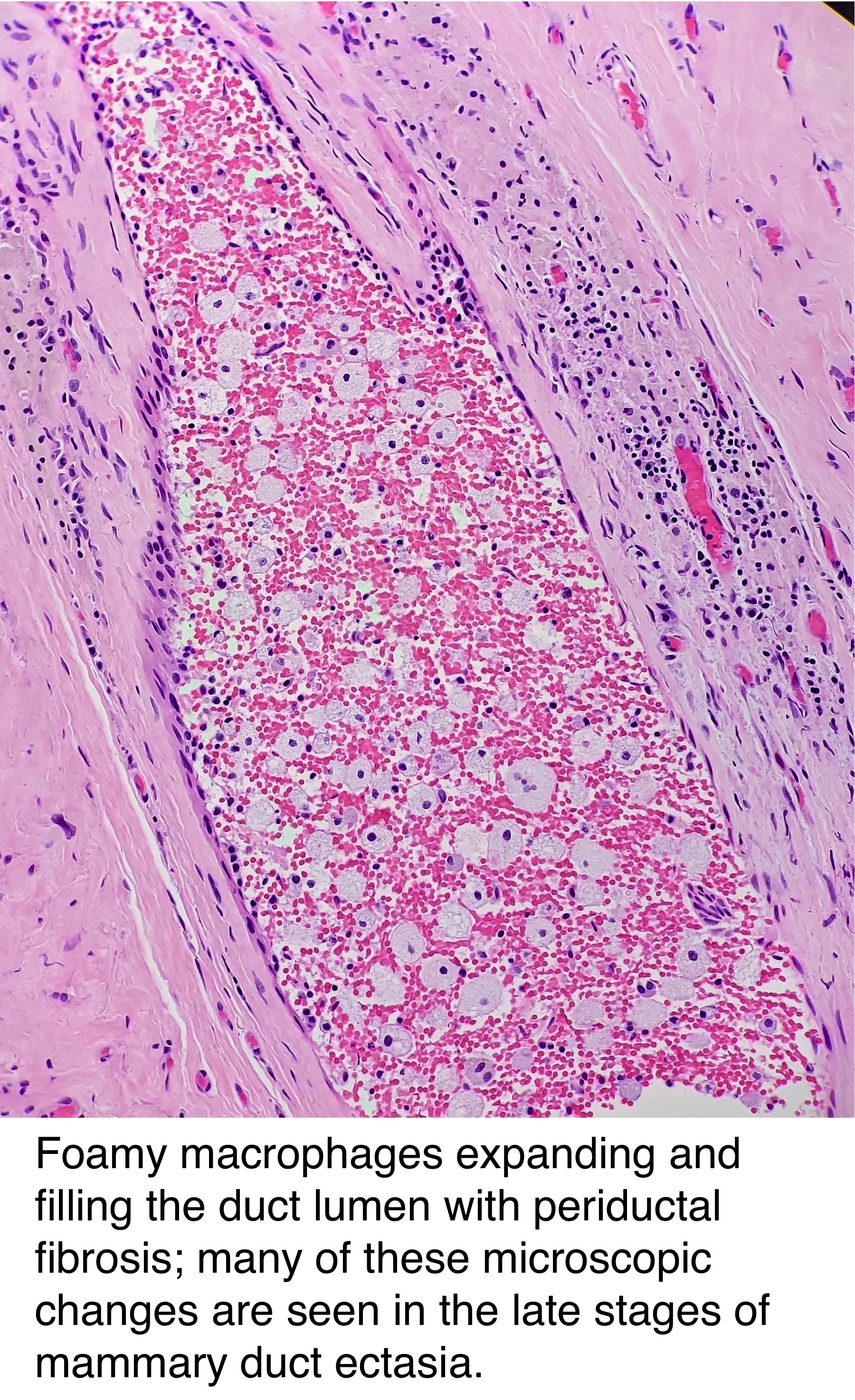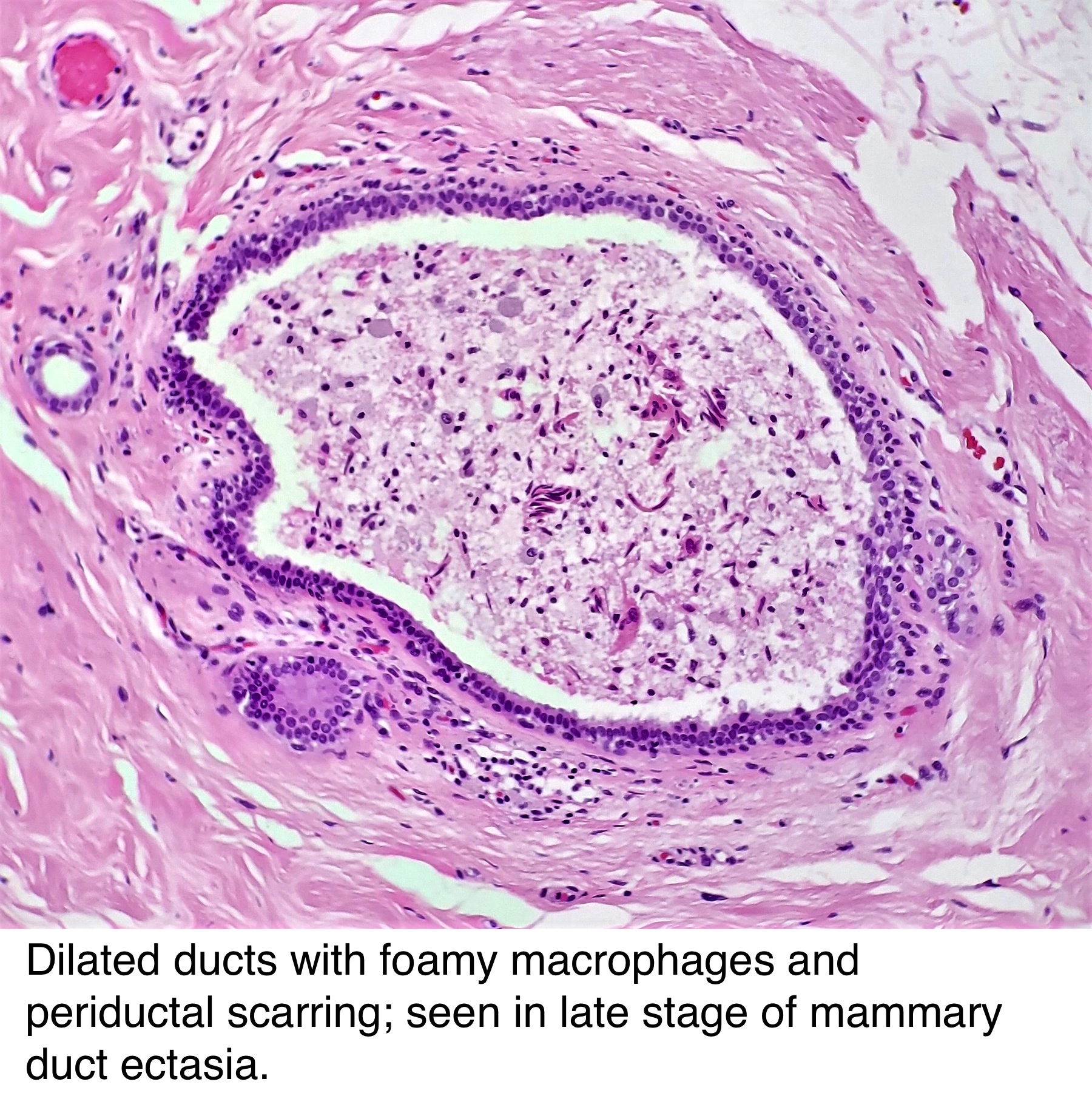Mammary Duct Ectasia Discharge
Mammary Duct Ectasia Discharge - Duct estasia is characterized by different degrees of periductal inflammation, periductal fibrosis and duct dilation, as well as. Mammary duct ectasia is frequently asymptomatic or only has subtle changes in breast texture that may go unnoticed until a. Less often, duct ectasia may cause a nipple discharge, which is often sticky and thick. Mammary duct ectasia is a condition that causes your milk ducts to become inflamed and thick. Duct ectasia of the breast, mammary duct ectasia or plasma cell mastitis is a condition that occurs when a milk duct beneath the nipple widens, the. The nipple and nearby breast tissue may be tender. Ductal ectasia is often asymptomatic, especially when benign. However, patients with ductal ectasia may present with.
Mammary duct ectasia is frequently asymptomatic or only has subtle changes in breast texture that may go unnoticed until a. However, patients with ductal ectasia may present with. Ductal ectasia is often asymptomatic, especially when benign. Duct estasia is characterized by different degrees of periductal inflammation, periductal fibrosis and duct dilation, as well as. Less often, duct ectasia may cause a nipple discharge, which is often sticky and thick. Duct ectasia of the breast, mammary duct ectasia or plasma cell mastitis is a condition that occurs when a milk duct beneath the nipple widens, the. The nipple and nearby breast tissue may be tender. Mammary duct ectasia is a condition that causes your milk ducts to become inflamed and thick.
Mammary duct ectasia is a condition that causes your milk ducts to become inflamed and thick. Duct estasia is characterized by different degrees of periductal inflammation, periductal fibrosis and duct dilation, as well as. Less often, duct ectasia may cause a nipple discharge, which is often sticky and thick. However, patients with ductal ectasia may present with. Duct ectasia of the breast, mammary duct ectasia or plasma cell mastitis is a condition that occurs when a milk duct beneath the nipple widens, the. Ductal ectasia is often asymptomatic, especially when benign. Mammary duct ectasia is frequently asymptomatic or only has subtle changes in breast texture that may go unnoticed until a. The nipple and nearby breast tissue may be tender.
Duct Ectasia Histology
Less often, duct ectasia may cause a nipple discharge, which is often sticky and thick. Duct estasia is characterized by different degrees of periductal inflammation, periductal fibrosis and duct dilation, as well as. Mammary duct ectasia is a condition that causes your milk ducts to become inflamed and thick. Duct ectasia of the breast, mammary duct ectasia or plasma cell.
Pathology Outlines Duct ectasia
Mammary duct ectasia is frequently asymptomatic or only has subtle changes in breast texture that may go unnoticed until a. Duct estasia is characterized by different degrees of periductal inflammation, periductal fibrosis and duct dilation, as well as. The nipple and nearby breast tissue may be tender. However, patients with ductal ectasia may present with. Less often, duct ectasia may.
Pathology Outlines Duct ectasia
Mammary duct ectasia is frequently asymptomatic or only has subtle changes in breast texture that may go unnoticed until a. Mammary duct ectasia is a condition that causes your milk ducts to become inflamed and thick. The nipple and nearby breast tissue may be tender. Less often, duct ectasia may cause a nipple discharge, which is often sticky and thick..
Asymmetric Ductal Ectasia An Often Overlooked Sign of Malignancy AJR
The nipple and nearby breast tissue may be tender. Less often, duct ectasia may cause a nipple discharge, which is often sticky and thick. Duct estasia is characterized by different degrees of periductal inflammation, periductal fibrosis and duct dilation, as well as. However, patients with ductal ectasia may present with. Ductal ectasia is often asymptomatic, especially when benign.
Mammary duct ectasia in a 2yearold boy presenting with bloody nipple
Duct ectasia of the breast, mammary duct ectasia or plasma cell mastitis is a condition that occurs when a milk duct beneath the nipple widens, the. Mammary duct ectasia is frequently asymptomatic or only has subtle changes in breast texture that may go unnoticed until a. Mammary duct ectasia is a condition that causes your milk ducts to become inflamed.
Duct Ectasia Histology
Less often, duct ectasia may cause a nipple discharge, which is often sticky and thick. However, patients with ductal ectasia may present with. The nipple and nearby breast tissue may be tender. Mammary duct ectasia is a condition that causes your milk ducts to become inflamed and thick. Duct estasia is characterized by different degrees of periductal inflammation, periductal fibrosis.
Pathology Outlines Duct ectasia
Mammary duct ectasia is a condition that causes your milk ducts to become inflamed and thick. Less often, duct ectasia may cause a nipple discharge, which is often sticky and thick. Ductal ectasia is often asymptomatic, especially when benign. Mammary duct ectasia is frequently asymptomatic or only has subtle changes in breast texture that may go unnoticed until a. The.
Pathology Outlines Duct ectasia
Mammary duct ectasia is a condition that causes your milk ducts to become inflamed and thick. Duct estasia is characterized by different degrees of periductal inflammation, periductal fibrosis and duct dilation, as well as. Less often, duct ectasia may cause a nipple discharge, which is often sticky and thick. Ductal ectasia is often asymptomatic, especially when benign. Mammary duct ectasia.
mammary duct ectasia (breast duct ectasia) 네이버 블로그
Ductal ectasia is often asymptomatic, especially when benign. Duct estasia is characterized by different degrees of periductal inflammation, periductal fibrosis and duct dilation, as well as. Less often, duct ectasia may cause a nipple discharge, which is often sticky and thick. Mammary duct ectasia is frequently asymptomatic or only has subtle changes in breast texture that may go unnoticed until.
Pathology Outlines Duct ectasia
Less often, duct ectasia may cause a nipple discharge, which is often sticky and thick. Ductal ectasia is often asymptomatic, especially when benign. Duct estasia is characterized by different degrees of periductal inflammation, periductal fibrosis and duct dilation, as well as. However, patients with ductal ectasia may present with. Mammary duct ectasia is frequently asymptomatic or only has subtle changes.
The Nipple And Nearby Breast Tissue May Be Tender.
Mammary duct ectasia is a condition that causes your milk ducts to become inflamed and thick. Less often, duct ectasia may cause a nipple discharge, which is often sticky and thick. Mammary duct ectasia is frequently asymptomatic or only has subtle changes in breast texture that may go unnoticed until a. Duct ectasia of the breast, mammary duct ectasia or plasma cell mastitis is a condition that occurs when a milk duct beneath the nipple widens, the.
Duct Estasia Is Characterized By Different Degrees Of Periductal Inflammation, Periductal Fibrosis And Duct Dilation, As Well As.
Ductal ectasia is often asymptomatic, especially when benign. However, patients with ductal ectasia may present with.
